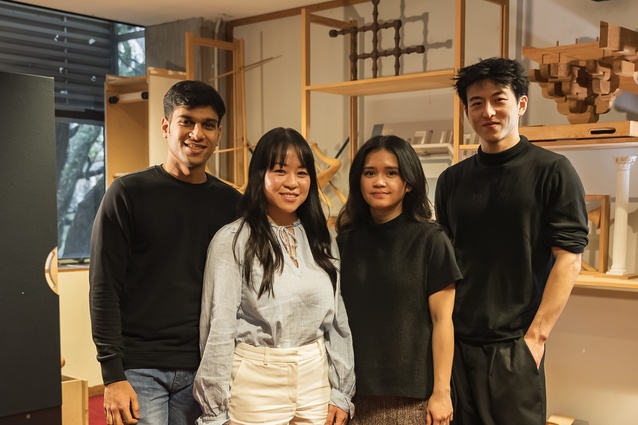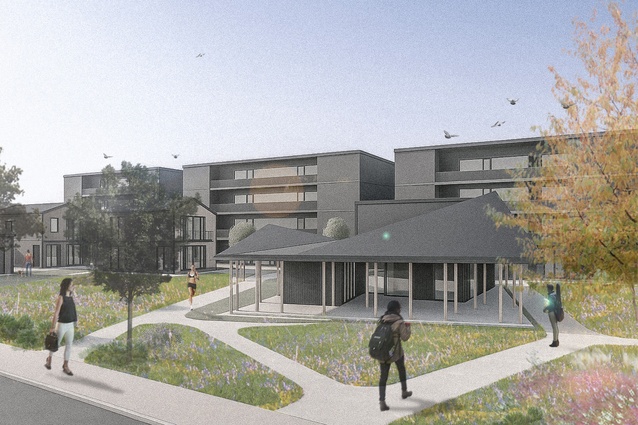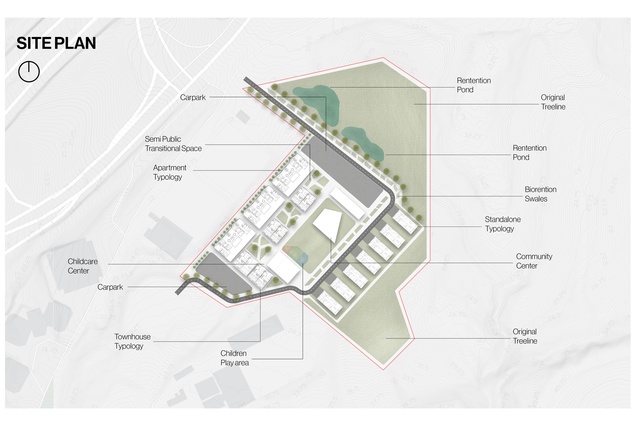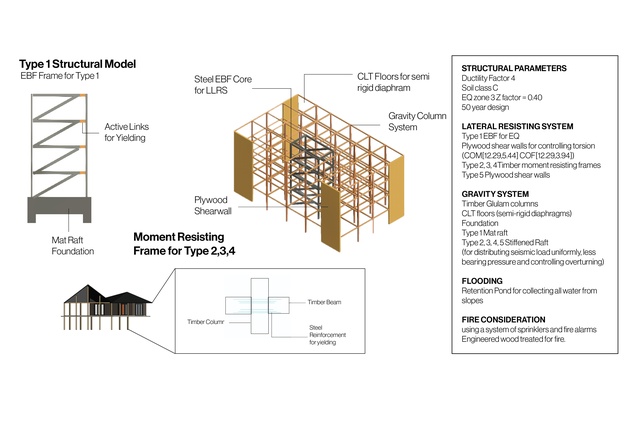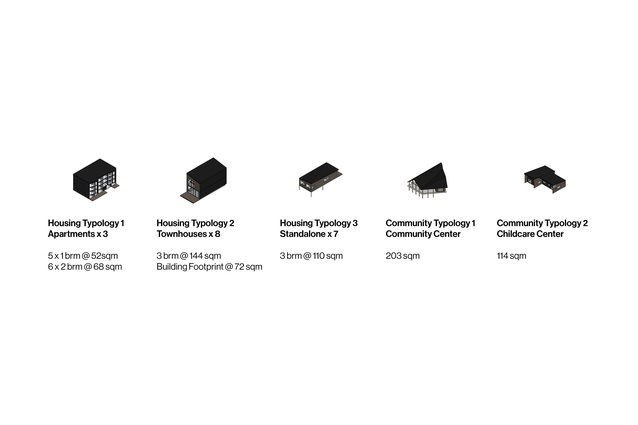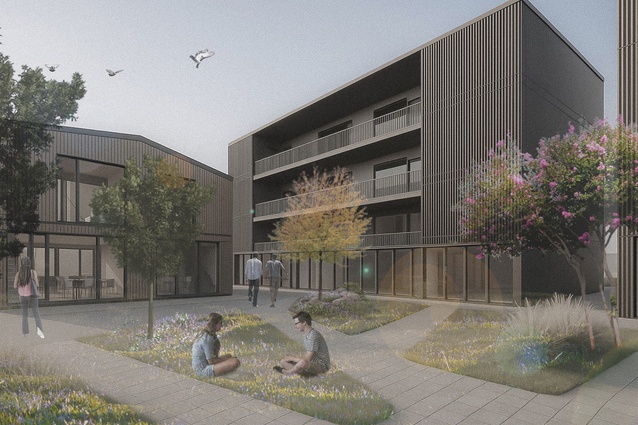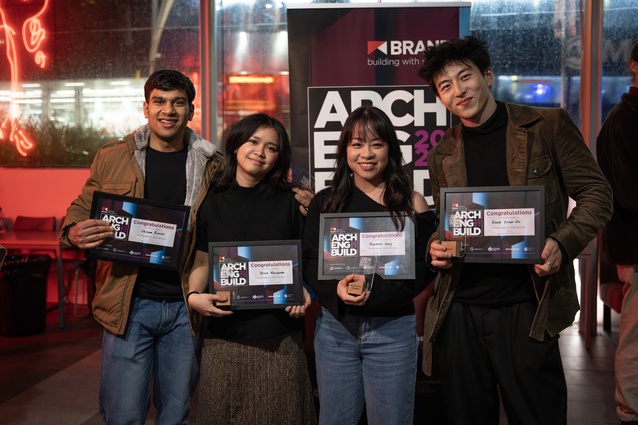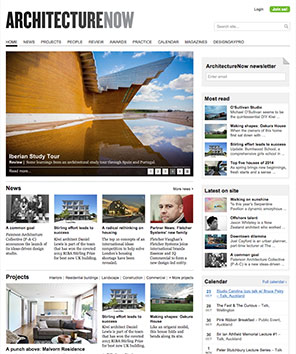Rauhītia: Designing for resilience in just 72 hours
Yinuo (Enoch) Shi was one of the winning team in this year’s ArchEngBuild competition held in Tāmaki Makaurau Auckland at the start of July. Here, he shares his thoughts on the multi-disciplinary learning experience.
ArchEngBuild is a national inter-disciplinary competition run by the Building Research Association of New Zealand (BRANZ), which brings together 40 of New Zealand’s top students in architecture, engineering and construction management. This year, landscape architecture and building science were part of the ArchEngBuild competition for the first time, with the 2025 challenge being: to develop a disaster resilient, affordable housing scheme in under 72 hours.
The brief centred on a site at the base of the Auckland Domain and teams were asked to design adaptable housing that could:
• Withstand floods, earthquakes, fire and wind
• Be reoccupied quickly after a disaster
• Translate across regions and community sizes
• Use sustainable, cost-effective materials
• Deliver positive environmental outcomes
My team was made up of students from across the motu:
• Shivam Bansal, Structural Engineering (University of Auckland)
• Isabella Mercado, Sustainable Systems Engineering (Te Herenga Waka)
• Beatrice Hong, Construction Management (Otago Polytechnic)
• Myself, Enoch Shi, Master of Architecture (University of Auckland)
Redefining resilience
We started by asking this core question: What does resilience mean to us? Through our initial research, we found that resilience isn’t just about buildings withstanding disaster. It’s about communities that can recover and thrive together. It’s about systems that adapt, people who support one another, and spaces that allow for both.
A University of Chicago study showed that neighbourhoods with strong social ties are three times more disaster-prepared than others. So our strategy revolved around two guiding aims:
1. Designing to withstand disaster
2. Creating a stronger and more interconnected community.
And that’s what we created.
From site to strategy
The site in Auckland Domain slopes significantly and channels water westward during storms. Instead of resisting these natural flows, we tried to work with them.
We introduced retention ponds in the northeast to capture runoff. Eastern standalone houses were lifted on timber stilts, allowing water to pass underneath. Bioretention swales wrapped the central site, guiding and absorbing excess flow. We used the land’s own contours to minimise disruption and maximise resilience.
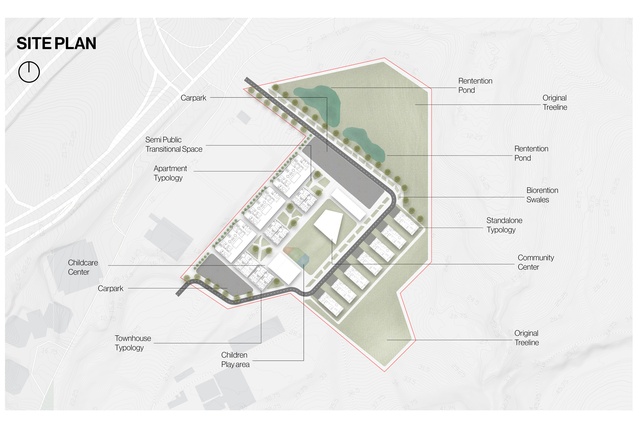
Community at the centre
We placed a central green park at the heart of the site: a park that’s used for everyday recreation and an emergency gathering zone if needed. Around this, three key civic buildings — a childcare centre, multipurpose community hall and local shops — formed a hub for daily and post-disaster necessities.
Surrounding these, we arranged townhouses designed for multigenerational living, with shared courtyards and access to open space. Along the western edge, three apartment blocks offered one- and two-bedroom units, designed in such a way as to maximise sunlight and make use of passive surveillance. This layout promoted social contact while offering typological diversity.
Structural integration
Shivam’s structural design directly responded to our design needs. To achieve cross-ventilation and daylighting in apartments, we broke symmetry in the layout. This meant complexity in the seismic resistance design, so we specified a steel, eccentrically-braced frame (EBF) and stabilised it with 3m plywood shear walls.
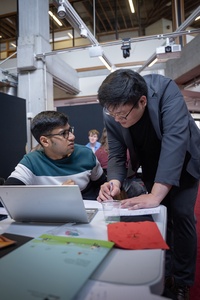
We opted for lighter, more flexible solutions for the core, to enable faster post-disaster repair and reduced carbon footprint, as suggested by our building scientist. In flood-prone areas, standalone houses used timber beam-column systems, elevated on piles to let water flow beneath and down into the retention areas.

Design under pressure
With just 72 hours to work within, we split the tasks. Shivam and I alternated between form and structure, which was developed in close collaboration with the building scientist to ensure appropriate building envelope strategies were considered. A series of building performance simulations were used to explore practical, climate-responsive approaches to daylighting, thermal comfort and energy efficiency. Shivam’s foundation design shaped Beatrice’s sequencing. Bella’s building simulation analyses informed our building assembly decisions. Every layer of the design influenced another. Most components were redesigned twice.
Takeaways
Rauhītia means “to gather, to shelter and care for one another.” That became the principle behind every drawing, every issue resolved and every detail refined.
The brief asked for resilient housing. We designed a collaborative approach that held social and structural resilience in equal importance. That model, we believe, is worth carrying forward.
Acknowledgements
A heartfelt thanks to our mentors, judges and the organisers: BRANZ, Concrete NZ, NZ Timber Design Society, Metals NZ, Southbase Group, Sustainable Steel Council, NZILA Tuia Pito Ora, Engineering New Zealand Te Ao Rangahau and Building Institute Aotearoa. And to Shivam, Bella and Beatrice, for proving that great design is always a team sport.

